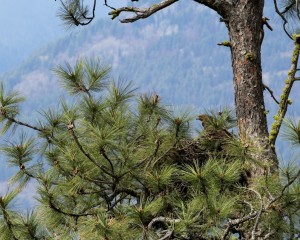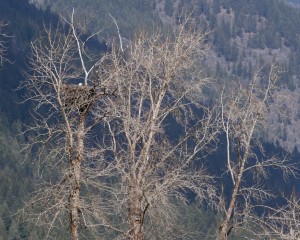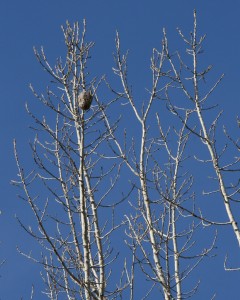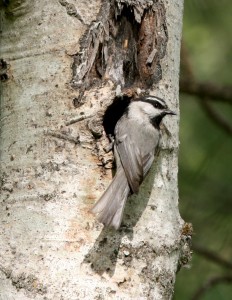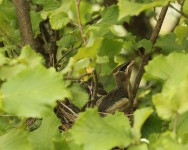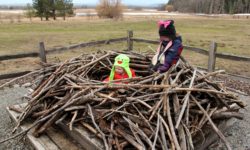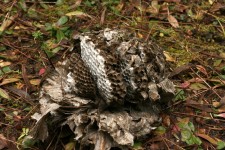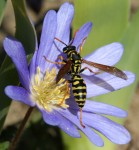Many birds are busy building their nests to capitalize on the insects and other food that will be abundant when the eggs hatch in a few weeks. Though some birds, like cedar waxwings, wait to nest until later in the summer when fruits will be ripe to feed their hatchlings.
While the cup nest (covered in last week’s column) of the American robin may be the most familiar and visible type of nest, there are several other types of nests.
Grebes and coots build plate-type nests. They are shallower than cup nests and loosely constructed. Their nests aren’t as elaborate as cup nests because they occupy the nest for a shorter amount of time than most songbirds.
On a larger scale are platform nests built by eagles, osprey, egrets and cormorants. The large conglomeration of sticks can weigh as much as two tons in the case of an eagle’s nests. Platform nests are built on the ground, on high ledges, in trees, on telephone poles or on man-made platforms.
While most songbirds don’t reuse their nests, those constructing platform nests typically reuse their nests. If a nest is reused, the bird will repair and add material to the nest for the next clutch of eggs. Sometimes a different bird species will reuse the nest such as a Canada goose nesting in a bald eagle’s nest.
Equally impressive to the large aeries of eagles are the pendants of orioles (the Bullock’s oriole inhabits the Inland Northwest). Pendant nests are hanging nests far out on a limb away from predators. Orioles weave pouches from plant fibers and then line the nest with hair, plant down, wool and fine moss. Incredibly, orioles weave plant material with only their beak and even tie knots to hold the nest together.
Birds utilize different tactics to keep their nests invisible or inaccessible from predators, including camouflage, placement out on a limb, or even enclosing the nest.
Sphere nests and cavity nests both limit the ways predators can enter the nest. Sphere nests are globular-shaped nests with an entrance hole. Marsh wrens, magpies and American dippers all build sphere nests and camouflage them quite well.
The marsh wren builds a coconut-shaped nest from bulrush or cattail stems. To distract potential predators from the actual nest, the male marsh wren may build multiple other “dummy” nests–sometimes more than 20 nests.
Black-billed magpies build two- to four-foot high bulky nests from sticks held together with mud. A canopy over the nest and a side entrance hole keeps the parents and eggs protected.
Another way birds protect their eggs is by nesting in cavities. Half of all bird orders (not species) nest in cavities or holes, including kingfishers, owls and woodpeckers. The cavities can be natural cavities, excavated cavities, abandoned cavities or nest boxes.
Woodpeckers and nuthatches excavate their own holes and then chickadees, bluebirds, some owls, ducks (such as wood ducks and hooded mergansers) and flycatchers use the abandoned cavities.
Similar to a cavity nest is a burrow nest. Belted kingfishers dig a tunnel in the bank of a stream, river, lake or sand pit to create a nesting cavity at the end. Excavation can take three days to nearly a week. On average, most birds build their nest within a week’s time with only their beak and feet.
However, one bird shirks nest building and nesting duties–the cowbird. Cowbirds lay their eggs in the nests of other birds and let them incubate and raise their young (known as host nests).
Each bird species has developed tactics to protect its eggs and young which has resulted in a diversity of nests that is unparalleled elsewhere in the animal kingdom.

